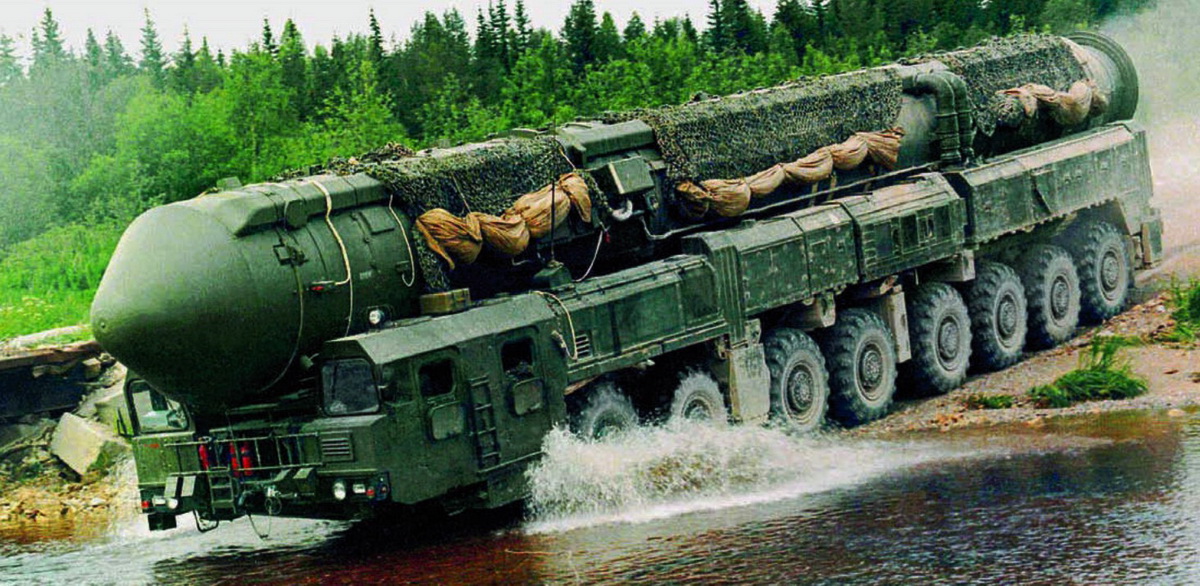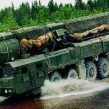
US Prompt Global Strike Moves Center Stage in Russian Security Planning
Publication: Eurasia Daily Monitor Volume: 11 Issue: 7
By:

Following the meeting of the Russian Ministry of Defense collegium in Moscow on December 10, 2013, the defense minister, Army-General Sergei Shoigu, and the chief of the General Staff, Army-General Valery Gerasimov, instructed the top brass on the priorities facing the military. In their addresses to the top brass in the newly formed “Situation Center” of the General Staff, commanders were told that the development of the plan of defense is linked mainly to the United States’ concept of “Prompt Global Strike” and the North Atlantic Treaty Organization (NATO) ballistic missile defense initiative. Voluminous Russian media coverage offers plenty of insight into the well-established objections in Moscow to the creation of missile defense in Europe, especially alleging that this has serious implications for Russia’s strategic nuclear deterrent. However, less is known on the much deeper issue of understanding US Prompt Global Strike capabilities and its possible implications for Russian defense planning (https://nvo.ng.ru/forces/2013-12-20/1 plans.html).
In a detailed analysis in RIA Novosti, Konstantin Bogdanov considers how Russian officials understand the concept of “Prompt Global Strike,” noting that Deputy Prime Minister Dmitry Rogozin had sharply criticized existing US plans. Bogdanov’s starting point is to highlight in simple terms Washington’s aim to create a military capability that would allow a non-nuclear strike anywhere in the world within 60 minutes. The author suggests the most feasible implementation of the concept would be using Intercontinental Ballistic Missiles (ICBM) armed with high-precision conventional warheads, while a second component may be strategic cruise missiles. A third component envisages the creation of advanced delivery vehicles capable of exiting and re-entering the atmosphere, though such developments face the problem of carrying heavy warheads and avoiding the militarization of space (https://ria.ru/analytics/20131212/983737904.html#).
Bogdanov’s analysis concedes that the US Prompt Global Strike capability is not being developed with Russia in mind, but states that it clearly does present added problems for Russian defense planners. In the event of a hypothetical use of such capabilities against Russia, the US would face the prospect of nuclear escalation and full retaliation. However, despite this, Bogdanov argues that Moscow cannot afford to ignore US Prompt Global Strike plans. Deputy Foreign Minister Sergei Ryabkov characterized such capabilities as presenting a “path to escalation” with “apocalyptic consequences.” The author also argues that Russia’s most advanced air defense systems do not offer country-wide protection against Prompt Global Strike capabilities (https://ria.ru/analytics/20131212/983737904.html#).
In order to fully protect the Russian state against this emerging potential threat, Bogdanov asserts that Moscow must create information systems for the detection and targeting of ballistic objects and the complementary firepower to counteract hypersonic targets. Although the threat of global nuclear war is greatly reduced, the author argues that the “lowering of the threshold for using tactical nuclear weapons” and the development of Prompt Global Strike can “significantly complicate the maintenance of strategic stability” (https://ria.ru/analytics/20131212/983737904.html#). Ultimately, in this context, Moscow appears to fear some form of a new and potentially crippling arms race.
Consequently, in an article in Voyenno Promyshlennyy Kuryer, Pavel Grachev, Dmitry Kornev and Alexei Ramm suggest that Russia’s Strategic Rocket Forces (RVSN), which control Russia’s land-based ICBMs, must be protected against sabotage and “Prompt Global Strike.” In fact, the two issues are interlinked in Russian security thinking. The authors state that the Russian ICBMs Topol (SS-25), Top-M (SS-27) and Yars (SS-29) in fixed silos are most vulnerable to future Prompt Global Strike advances (https://vpk-news.ru/articles/18661#).
Here, Grachev, Kornev and Ramm consider the potential to link between the remote conventional strike capability and the use of Special Forces sabotage groups. Following the US intervention in Iraq in 2003, the Pentagon developed its doctrine of operations against critical and highly sensitive enemy targets (Sensitive Site Exploitation Operations—SSEO). However, the Russian military analysts are clear about the main sources of threat to the RVSN: reconnaissance satellites and radar reconnaissance and sabotage groups. In the “near future,” this list of threats will extend to unobtrusive drones, using a mixture of saboteurs and precision drone strikes. As a result, the RVSN must strengthen its protection for mobile divisions, patrol routes, positioning areas and their starting positions, their analysis concludes (https://vpk-news.ru/articles/18661#).
The authors note that the RVSN received 40 mobile jammer complexes in 2013 (RP-377L) and expect more to arrive soon. These are portable, fitting in several backpacks or mounted on the base vehicle, and can cover and identify enemy saboteurs’ communications over a twenty kilometer radius. The RVSN also received new MKTK-1A “Judoka” automated electronic warfare (EW) complexes. Such complexes monitor enemy satellite communications, third-party sources of radiation, sensor guidance systems and essentially any effort to insert Special Forces. In addition, the RVSN is also procuring new EW equipment in a major effort to enhance the protection of key assets. Curiously, the article concludes by asserting that the RVSN is “actively purchasing” the “latest EW systems” capable of withstanding the spectrum of threats. In other words, the defense ministry is already taking steps to ensure that no arms race will commence precisely by investing in infrastructure protection (https://vpk-news.ru/articles/18661#).
Moreover, a plan is being drafted to deploy rail-mounted nuclear missiles as a potential response to Prompt Global Strike. On December 18, 2013, Lieutenant-General Sergei Karakaev said, “A defense ministry report has been submitted to the president and the order has been given to develop a preliminary design of a rail-mounted missile system.” Karakaev added that extensive analysis of the US system led to the conclusion that “there is a need to reconsider the issue of a rail-mounted missile system given its increased survivability and the extent of our railway network” (RIA Novosti, December 18).
Bombastic pronouncements by Rogozin and other Russian defense officials against US Prompt Global Strike may, in fact, mirror irrational concerns over missile defense plans. The fear of an arms race triggered by the United States developing conventional strike capabilities that might undermine Russia’s strategic nuclear deterrent lies more in the political realm than in the military-technical. However, at a certain level, these concerns are very real and the evidence is seen in the efforts already in progress to boost existing EW capabilities in order to ensure the protection of the RVSN against such hypothetical threats.




